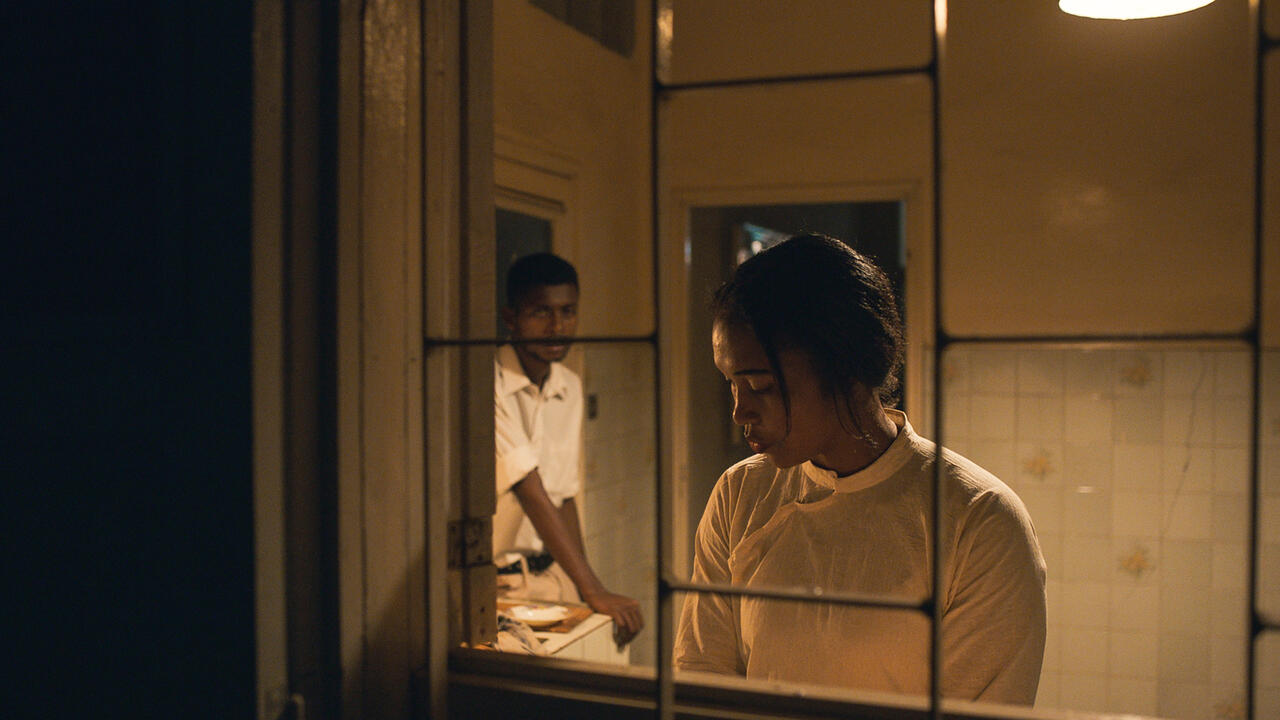The Generational: Younger Than Jesus
New Museum, New York, USA
New Museum, New York, USA

These days, 24 hours might just constitute an entire epoch – or at least that’s the idea that dangled like a low-hanging bunch of grapes from The 24 Hour Roman Reconstruction Project, or, Building Rome in a Day (2008–9), Liz Glynn’s installation in the New Museum’s lobby gallery. It was one of the first works encountered in ‘The Generational: Younger Than Jesus’, and during the press preview the artist and her team of volunteers toiled over her panorama of the ancient city, cutting and glue-gunning great heaps of recycled cardboard and wood into miniature temples and aqueducts. Though a museum staff member observed that Glynn’s reconstructed Rome appeared to be running a few hundred years late for its scheduled sacking that evening, the vibe among the city builders was social, industrious and unruffled.
The work of 50 artists younger than 33, from 25 countries, was the focus of the museum’s first triennial. Future instalments may focus on other generations, but this being the New Museum they started with the freshest bunch, the Millennials, artists who were born no earlier than 1976, who came of age amidst far-reaching economic prosperity and who are mobile, global and hyper-connected. The exhibition, which is more nuanced than its showboating subtitle might suggest, clearly demonstrates the New Museum’s flair for staging provocative, intelligent surveys. Curators Lauren Cornell, Massimiliano Gioni and Laura Hoptman noted that they modelled their early research on the under-33 set’s networking proclivity, reaching out to an ‘information-sharing group’ of professional contacts around the world. This method, relying on email rather than a studio visit, just might constitute the sweetest glass of lemonade you could possibly squeeze from recession-time lemons. It also meant that, although young, most of the artists already have abundant art-world contacts and, in most cases, gallery representation.

This split-screen present – apparently we Twitter and update our Facebook profiles from our iPhones while driving our crap cars to Target – takes wild shape in the work of Philadelphia-based artist Ryan Trecartin, whose compulsively watchable video installation Sibling Topics (Section A and Section B) (2009) is the show’s indisputable centrepiece. His coterie of manic, mouthy, ambiguously gendered divas, in bird-of-paradise make-up and imperfect wigs, spout quips and snaps that are directed at each other but delivered through cell phones and into the camera. In Poster for Dialog With the Band AIDS WOLF (2009) Brendan Fowler addressed more directly the way that social interconnectedness can paradoxically result in a total communication breakdown. Using the old-school format of a printed show poster, he distilled the details of how he and AIDS WOLF, a band whose name he found objectionable, publicly feuded on blogs and through third-party email correspondence without ever actually interacting.
‘Younger Than Jesus’ was well-stocked with crowd pleasers like Chu Yun’s ‘living sculpture’ of a woman sleeping in a bed in the middle of the gallery (This is XX, 2006) and AIDS-3D’s OMG Obelisk (2007) which humorously memorialized IM’s condensed exclamation on the favoured totem of ancient worship. But several works tangle more profoundly with the 20th century’s mixed legacies, like Luke Fowler’s darkly gripping What You See is Where You’re At (2001) an open-ended documentary about an experimental dwelling for schizophrenic residents in 1960s London. Tanagram (2006–7), a black and white video by Anna Molska, shows two athletic youths wheeling black shapes into various permutations, enthusiastically reworking aged Constructivist forms. Best of all was Cyprien Galliard’s Desniansky Raion (2007), a half-hour music video of a light and fireworks display that takes place on a massive, condemned housing project in France. At its climax, when the building implodes into a dusty, colourful plume, the viewer is carried along in a state of euphoric excitement by the thrumming electronic soundtrack, which begs to be played at top volume. Don’t look back, Galliard slyly suggests, or if you must, think only of the future while you do.
‘Younger Than Jesus’ has attracted much public scepticism about the wide-net, blunt-end parameters of curating by age limit. Nevertheless the curators seem to have enacted some sort magical transubstantiation, turning an arbitrary organizational premise into an upbeat summary of recent activity on the international circuit, just as we enter a new era when there will likely be fewer ’ennials and festivals to nurture new talent. The participants in this show are linked not by (or at least not just by) their status as Facebook friends, but by optimism, gravitas and intelligence; qualities that will surely come in handy in those lean years ahead.
























